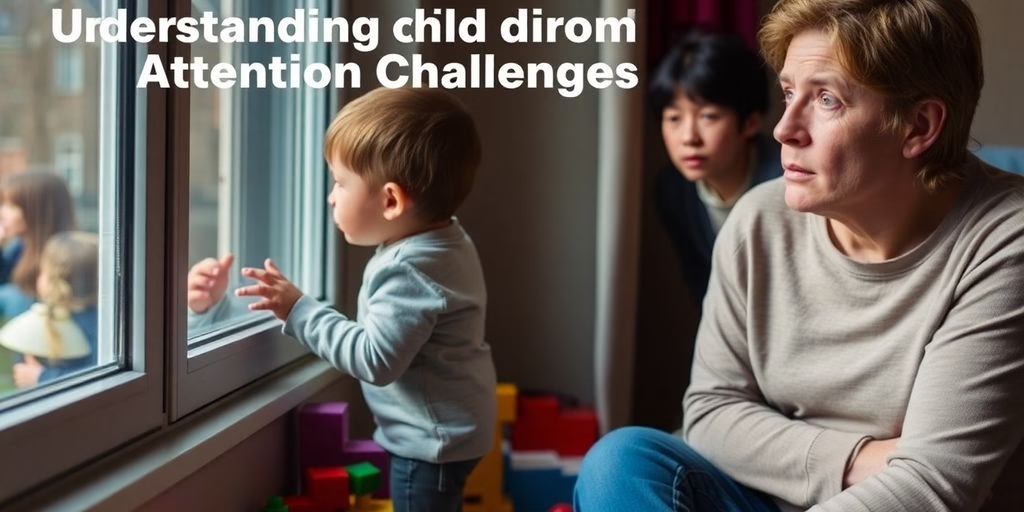It can be tough when you notice some changes in your child’s behavior. Sometimes, these changes might point to something like ADHD. Understanding the signs of ADHD in kids is the first step for parents trying to help their children. This guide breaks down what to look for, so you can better understand what might be going on.
Key Takeaways
- ADHD in children often shows up as trouble focusing or being overly active and impulsive.
- The way ADHD appears can change as kids get older, with different signs seen in preschoolers versus school-aged children.
- Recognizing these signs is important for getting the right support for your child.
Understanding the Core Signs of ADHD in Kids

Attention-Deficit/Hyperactivity Disorder (ADHD) is a common neurodevelopmental condition that affects how a child pays attention, controls impulses, and manages their activity level. It’s not about bad behavior or a lack of discipline; it’s a difference in brain function. For parents in Texas, Washington, California, Iowa, and New York, recognizing these signs early is key to getting the right support. Polished Mind Psychiatry is here to help families understand and manage ADHD. If you suspect your child might have ADHD, consider reaching out for a professional evaluation at book an appointment.
Inattentive Characteristics
Children with the inattentive presentation of ADHD often struggle with focus and organization. They might seem like they aren’t listening, even when you’re speaking directly to them. This can look like:
- Difficulty paying close attention to details, leading to careless mistakes in schoolwork or other activities.
- Trouble holding attention during tasks or play, often getting sidetracked easily.
- Appearing not to listen when spoken to, as if their mind is elsewhere.
- Problems with organization, such as difficulty managing tasks, keeping belongings tidy, or following instructions.
- Avoiding or disliking tasks that require sustained mental effort.
- Frequently losing things necessary for tasks, like school supplies, pencils, or books.
- Being easily distracted by external stimuli.
- Forgetfulness in daily activities, like chores or appointments.
It’s important to remember that occasional forgetfulness or distraction is normal for children. However, with ADHD, these symptoms are persistent and interfere significantly with a child’s daily life and functioning.
Hyperactive and Impulsive Behaviors
The hyperactive-impulsive type of ADHD involves excessive movement and difficulty controlling impulses. Children with these symptoms often find it hard to stay still and may act without thinking.
- Fidgeting or squirming when seated, or having trouble staying in their seat.
- Feeling a constant need to move, often running or climbing in inappropriate situations.
- Difficulty engaging in quiet leisure activities.
- Often being
Recognizing ADHD Signs in Different Age Groups

It’s helpful for parents to know that ADHD symptoms can look different depending on a child’s age. What might be a sign in a preschooler could be less noticeable or interpreted differently in a school-aged child. At Polished Mind Psychiatry, we understand these nuances and aim to provide clarity for families in Texas, Washington, California, Iowa, and New York.
Preschool and Early Childhood Indicators
For very young children, typically between ages 1 and 5, spotting ADHD can be tricky because many behaviors associated with ADHD can also be part of normal development. It’s important to look for patterns that are more intense or persistent than what’s typical for their age group. For instance, a toddler might have more frequent and intense tantrums than their peers, or they might show extreme reactions to both good and bad things, like screaming with joy over small events or becoming inconsolable over minor setbacks. These heightened emotional responses can be an early indicator of ADHD in toddlers.
- Excessive Fidgeting: Constant movement, even when sitting is expected.
- Difficulty Waiting: Trouble staying put in lines or during activities.
- Impulsive Actions: Acting without thinking, like grabbing toys or running off.
- Short Attention Span: Difficulty focusing on simple tasks or games for more than a few minutes.
It’s important to remember that many young children exhibit some of these behaviors. The key is the frequency, intensity, and persistence of these actions, and how they impact the child’s ability to function in daily life.
If you’re concerned about your child’s development, seeking a professional evaluation is a good step. You can book an appointment to discuss your observations.
School-Aged Children’s Manifestations
As children enter school, ADHD symptoms often become more apparent because the classroom environment demands sustained attention, impulse control, and organization. Children with ADHD might struggle with tasks that require focus, like homework or listening to instructions. They may make careless mistakes on assignments, have trouble keeping their minds on tasks or play, and often don’t seem to listen when spoken to directly not following instructions.
- Inattention: Losing homework, forgetting chores, daydreaming frequently, and having difficulty organizing tasks.
- Hyperactivity: Fidgeting with hands or feet, leaving their seat when expected to stay seated, and running or climbing excessively.
- Impulsivity: Blurting out answers, interrupting conversations, and having difficulty waiting their turn.
These behaviors can lead to challenges in school, with friendships, and at home. For example, a child might frequently lose their school supplies, interrupt classmates during lessons, or struggle to complete assignments on time common signs of ADHD. It’s the pattern of these behaviors that suggests a potential diagnosis.
If you suspect your child might have ADHD, reaching out for professional guidance is recommended. You can book an appointment to explore diagnostic and treatment options.
Understanding ADHD signs can differ greatly depending on a person’s age. What might look like typical childhood energy could be a sign of ADHD in kids, while in adults, it might show up as trouble focusing at work or managing daily tasks. Recognizing these differences is key to getting the right help. If you suspect ADHD in yourself or a loved one, exploring our resources can provide valuable insights. Visit our website today to learn more about ADHD symptoms across all age groups and find out how we can support you.
Moving Forward with Understanding and Support
Recognizing the signs of ADHD in children is the first step toward getting them the help they need. It’s important for parents to remember that these signs can look different in every child, and sometimes they might be mistaken for other things. If you’re seeing patterns that worry you, talking to a doctor or a mental health professional is a good idea. They can help figure out what’s going on and create a plan. Treatment plans often involve checking in regularly and making adjustments as the child grows. Polished Mind Psychiatry offers services for child and adult ADHD, with a focus on personalized care and telehealth options. They aim to help families understand and manage ADHD, leading to better daily function. Don’t hesitate to reach out for support; taking that step can make a real difference for your child’s well-being and development. You can book an appointment at Polished Mind Psychiatry
Frequently Asked Questions
What are the main signs of ADHD in children?
Signs of ADHD in children can be grouped into two main categories: inattentiveness and hyperactivity/impulsivity. Children who are inattentive might have trouble focusing, seem forgetful, lose things often, or get easily distracted. Those with hyperactive and impulsive behaviors might fidget a lot, have trouble sitting still, talk excessively, interrupt others, or act without thinking.
How do ADHD signs differ in young children versus school-aged kids?
It’s important to remember that ADHD symptoms can look different in different age groups. For example, very young children might show more physical hyperactivity, while older kids might struggle more with organization and staying focused on schoolwork. Recognizing these age-specific signs helps parents and caregivers understand how ADHD might affect their child.
What should a parent do if they think their child has ADHD?
If a parent suspects their child might have ADHD, the best first step is to talk to a healthcare professional, like a pediatrician or a mental health specialist. They can conduct a thorough evaluation to determine if ADHD is present and discuss appropriate treatment options. Early diagnosis and support are key to helping children manage their symptoms effectively.




